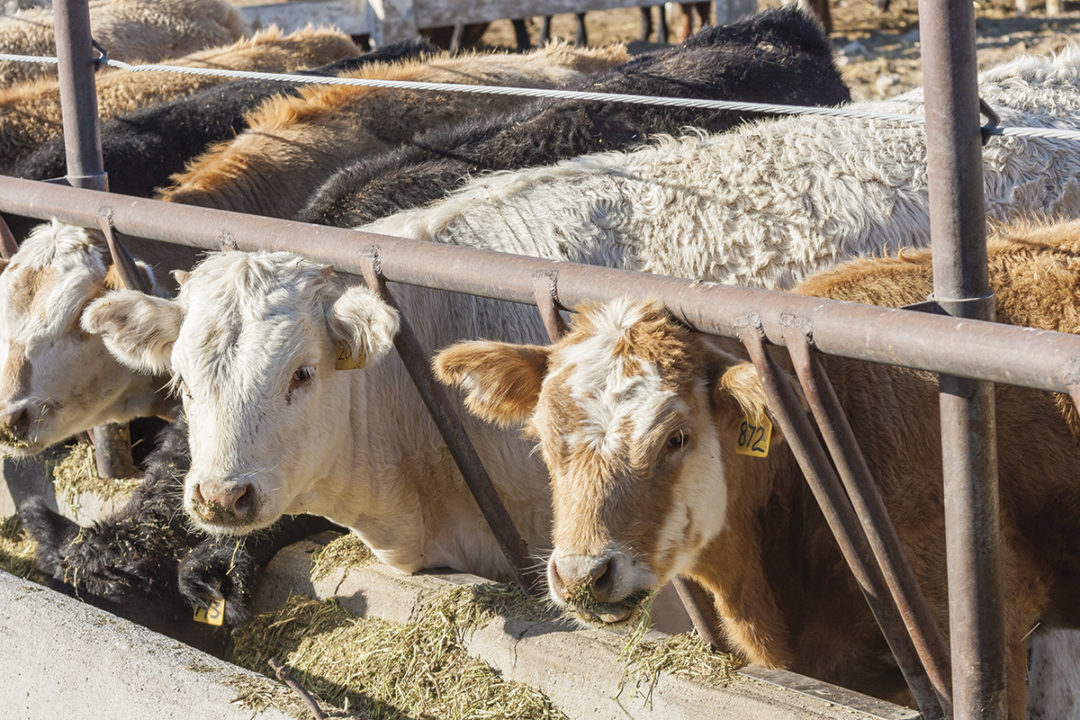The beef-packing industry has made significant improvements and progress in the application of pathogen interventions in the processing plant since the 1993 Jack in the Box E. coli O157:H7 outbreak. Yet, even with these tremendous efforts, beef recalls due to the pathogens E. coli O157:H7 and the other “Big 6” enterohemorrhagic E. coli (EHECs) and salmonella still occur.
These pathogens often inhabit the gastrointestinal tract of both feedlot and dairy cattle. While the above EHECs do not cause any ill effect to the animal, on occasion salmonella becomes virulent, typically in young animals with an immature gut microflora or in older animals with a disrupted gut microbiome. More often than not, salmonella resides quietly within the gastrointestinal tract without causing any apparent ill effects. Adding to the challenge of controlling salmonella, this pathogen is often found in the non-mesenteric peripheral lymph nodes that, unless removed by trimming, may be incorporated into trim used in the production of ground beef.
Despite considerable study, little is known about the survival of these pathogens within the feedlot environment or the transmission dynamics among the cattle. In general, these pathogens are more prevalent in summer and early fall versus winter and spring. Salmonella tends to be more common in feedlots in the Southern latitudes, whereas EHECs are more often found in the Northern climates. That said, the only consistent thing about these pathogens is their inconsistency. Variations among feedlots located within a small geographical region may be significant. In fact, fecal shedding of salmonella and EHECs can vary significantly within cattle in a single feedlot operation, differing from pen to pen and even changing over short periods of time within an individual animal.
Pre-harvest pathogen control
Considering how little is understood about these pathogens in the feedlot, the significant variation in infection rates of cattle and the consistent inconsistency they demonstrate, the development of effective pre-harvest interventions is a challenge. Not surprisingly, when compared to post-harvest interventions, the development of effective pre-harvest intervention strategies has not been as successful as desired. This, however, is not a result of a lack of effort. On the contrary, considerable time and money have been expended in designing and evaluating numerous pre-harvest intervention strategies.
Mitigation strategies have included vaccines, direct-fed microbials (DFMs), diet changes, phytochemicals, chlorate, bacteriophage and binders, among others. Varying degrees of success have been documented in controlled research and field studies, such as chlorate showing promise with a direct killing effect on both salmonella and EHECs – while some DFMs have decreased fecal shedding of EHECs but had little to no effect on salmonella. One DFM in particular has shown significant adoption in feedlots, but effectiveness is difficult to determine; in some cases, significant EHEC loads have been observed in cattle receiving that same intervention. Some interventions may have demonstrated anti-pathogen effects; however, as tested, they could not be applied in a feasible, cost-effective manner in a commercial feedlot. The silver bullet continues to elude researchers.
Where do we go from here?
While research efforts continue with some of these discussed intervention technologies, it appears new ideas that challenge existing paradigms may win the day. For instance, is the immune system important? Perhaps it is on those few occasions when salmonella is virulent. However, considering the prevalence in which salmonella is found in cattle, it seems as though this bacterium has learned how to exist essentially as a commensal organism. Intriguing research in poultry is strongly supporting the concept that salmonella is interfering with the gut-brain axis, thus mitigating the immune response.
As for EHECs, they do not cause disease in cattle, hence the immune system doesn’t recognize these bacteria as a threat to the animal’s well-being. Research in dairy cattle demonstrated vertical transmission of salmonella from dam to calf. This raises the question: If a calf is infected with salmonella from the dam and then re-exposed to a virulent strain later in life, will the animal’s immune system recognize it as a potential pathogen? Is this why salmonellosis can be especially problematic in young calves? Or is it related to the status of the gut microbiome – or lack thereof – in a young animal?
Perhaps gaining a better understanding of why some animals within a pen are colonized by these pathogens while others are not may contribute to development of a solution. Why do some animals shed significantly more salmonella or EHECs in their feces – aka super-shedders – than other animals within the same feedlot that are managed similarly? Will a “healthy” gut win the day? Could something as simple as contributing to a robust gut microbiome, supporting epithelial integrity and/or optimizing feedstuff utilization contribute to a less hospitable environment for these pathogens? Ongoing research conducted by collaborative scientists and supported by the beef industry at institutions such as West Texas A&M University, Kansas State University and others may provide answers.
Managing pathogens that are a food safety concern at the feedlot presents an excellent opportunity to reduce the pathogen burden entering the processing plant, thereby enhancing the effectiveness of in-plant post-harvest interventions and, ultimately, leading to the production of safer beef products for the consumer.












